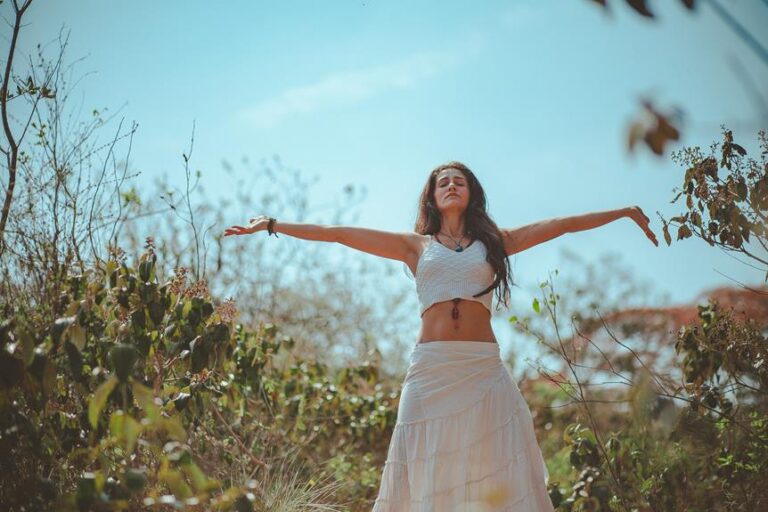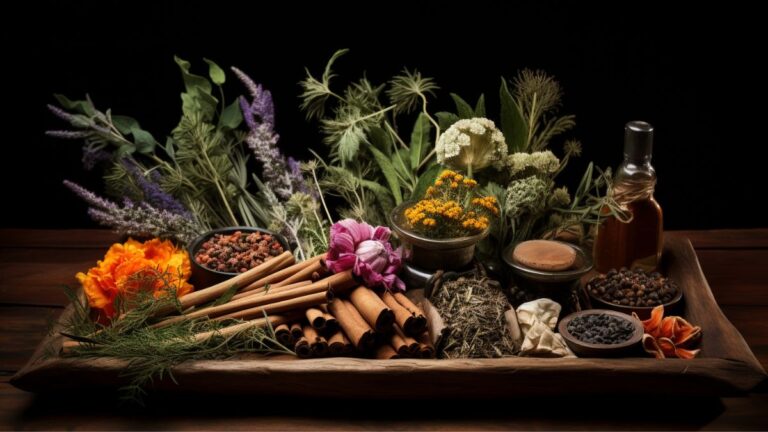Unveiling Sustainability in the Herbal Medicine Sphere
Are you curious about how sustainable practices can be implemented in the herbal medicine sphere?
Let’s take a look at the case of a small herbal farm in the heart of the countryside. By embracing eco-friendly cultivation methods, this farm not only ensures the longevity of medicinal plants but also supports the health of the surrounding ecosystem.
In this article, we will explore the importance of sustainability in herbal medicine and learn how we can contribute to its conservation for a healthier future.
Importance of Herbal Medicine Conservation
Your role in the conservation of herbal medicine is crucial.
Traditional medicine has been an integral part of many cultures for centuries, providing natural remedies for various ailments. However, the increasing popularity of modern medicine has led to a decline in the use and preservation of herbal remedies.
It’s essential for communities to recognize the significance of traditional medicine and actively participate in its conservation. By engaging in community involvement, you can contribute to the preservation of herbal medicine knowledge and practices.
This could include supporting local herbalists, participating in herbal medicine workshops, or even cultivating medicinal plants in your own garden. By valuing and protecting traditional medicine, we not only preserve our cultural heritage but also promote a holistic approach to healthcare that connects us to nature and our ancestors.
Threats to Herbal Medicinal Plants
The conservation of herbal medicine is imperative due to the threats facing medicinal plants. In order to ensure the sustainability of herbal medicine, it’s important to understand and address these threats.
One of the main threats to herbal medicine sustainability is overharvesting. Due to the high demand for medicinal plants, many species are being harvested at an unsustainable rate, leading to their depletion in the wild.
Habitat loss is another significant threat, as urbanization and deforestation continue to encroach upon the natural habitats of medicinal plants. This destruction of habitats reduces the available space for medicinal plants to grow and reproduce.
Climate change also poses a threat, as it can disrupt the delicate balance of ecosystems and affect the growth and survival of medicinal plants. Changes in temperature, rainfall patterns, and extreme weather events can have detrimental effects on the medicinal plants’ ability to thrive.
Conservation efforts are essential to combat these threats and protect the future of herbal medicine. This includes promoting sustainable harvesting practices, such as harvesting only a portion of the plant without causing harm to its population or ecosystem. Protecting natural habitats through the establishment of protected areas or conservation agreements is also crucial.
Furthermore, supporting initiatives that mitigate the impacts of climate change, such as reducing greenhouse gas emissions and promoting sustainable land management practices, is essential for the long-term survival of medicinal plants.
Sustainable Harvesting Practices
To ensure the sustainability of herbal medicine, it’s crucial that you adopt and implement sustainable harvesting practices.
Ethical sourcing and wild harvesting are two key components of sustainable harvesting. Ethical sourcing involves ensuring that the plants are harvested in a way that respects their natural habitats and the communities that rely on them. This includes obtaining plants from reputable suppliers who follow fair trade practices and supporting local communities by buying directly from them.
Wild harvesting, on the other hand, involves gathering plants from their natural habitats in a way that doesn’t harm the population or ecosystem. This can include techniques such as selective harvesting, where only mature plants are collected, and leaving enough plants behind for regeneration.
Cultivation and Propagation of Medicinal Plants
One way to ensure the sustainability of herbal medicine is by cultivating and propagating medicinal plants. This can be done through various methods, including hydroponic cultivation and traditional farming methods.
Here are three key points to consider:
- Hydroponic cultivation: This method involves growing plants in a nutrient-rich solution instead of soil. It allows for more control over the growing environment and can result in higher yields and faster growth rates. Additionally, hydroponics uses less water and land compared to traditional farming methods, making it a more sustainable option.
- Traditional farming methods: These include practices such as crop rotation, intercropping, and organic farming. By using these methods, farmers can maintain soil fertility, reduce the use of synthetic fertilizers and pesticides, and promote biodiversity. This not only benefits the medicinal plants but also contributes to a healthier ecosystem.
- Importance of seed saving: Propagating medicinal plants through seed saving helps preserve plant genetics and ensures a continuous supply of seeds for future cultivation. By saving seeds from healthy and high-quality plants, farmers can maintain the desired traits of the medicinal plants and promote their sustainability.
Certification and Regulation for Sustainability
Ensure the sustainability of herbal medicine by obtaining certification and adhering to regulations.
Certification standards play a crucial role in promoting sustainability in the herbal medicine sphere. They provide a set of guidelines and criteria that herbal medicine producers must meet to demonstrate their commitment to ethical sourcing and sustainable practices.
Certification programs such as FairWild and USDA Organic ensure that medicinal plants are sourced responsibly, with consideration for environmental, social, and economic factors. These programs require producers to follow strict guidelines regarding cultivation, harvesting, and processing methods.
By obtaining certification, herbal medicine producers can enhance their credibility and trustworthiness among consumers who prioritize sustainability.
Additionally, governmental regulations also play a vital role in ensuring sustainable practices in the herbal medicine industry. Adhering to these regulations helps protect natural resources, preserve biodiversity, and support local communities.
Conclusion
In conclusion, it’s imperative that we prioritize the conservation and sustainable practices in the herbal medicine sphere.
By understanding the importance of herbal medicine conservation, addressing threats to medicinal plants, implementing sustainable harvesting practices, promoting cultivation and propagation, and establishing certification and regulation for sustainability, we can ensure the long-term availability and effectiveness of herbal medicine.
Let’s embark on this holistic journey of preserving our natural resources and promoting a healthier future for all.
Together, we can make a difference.






